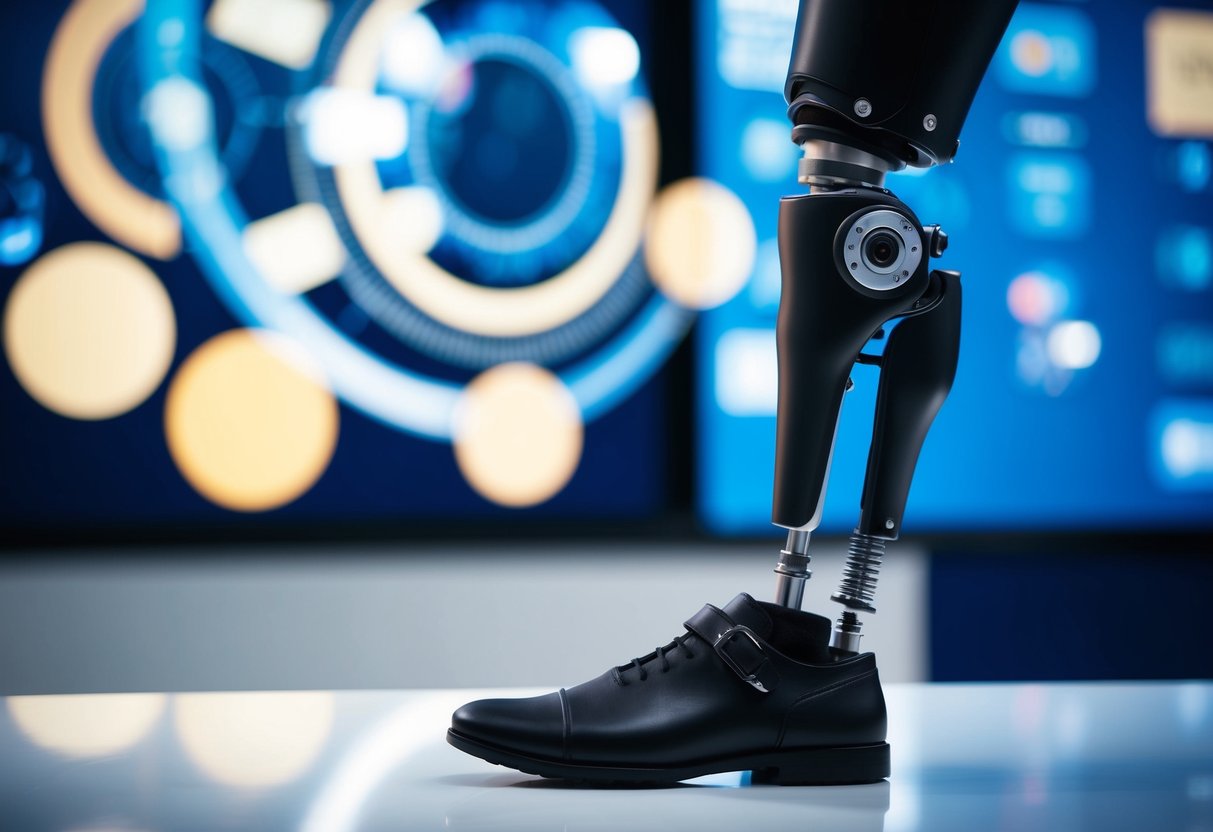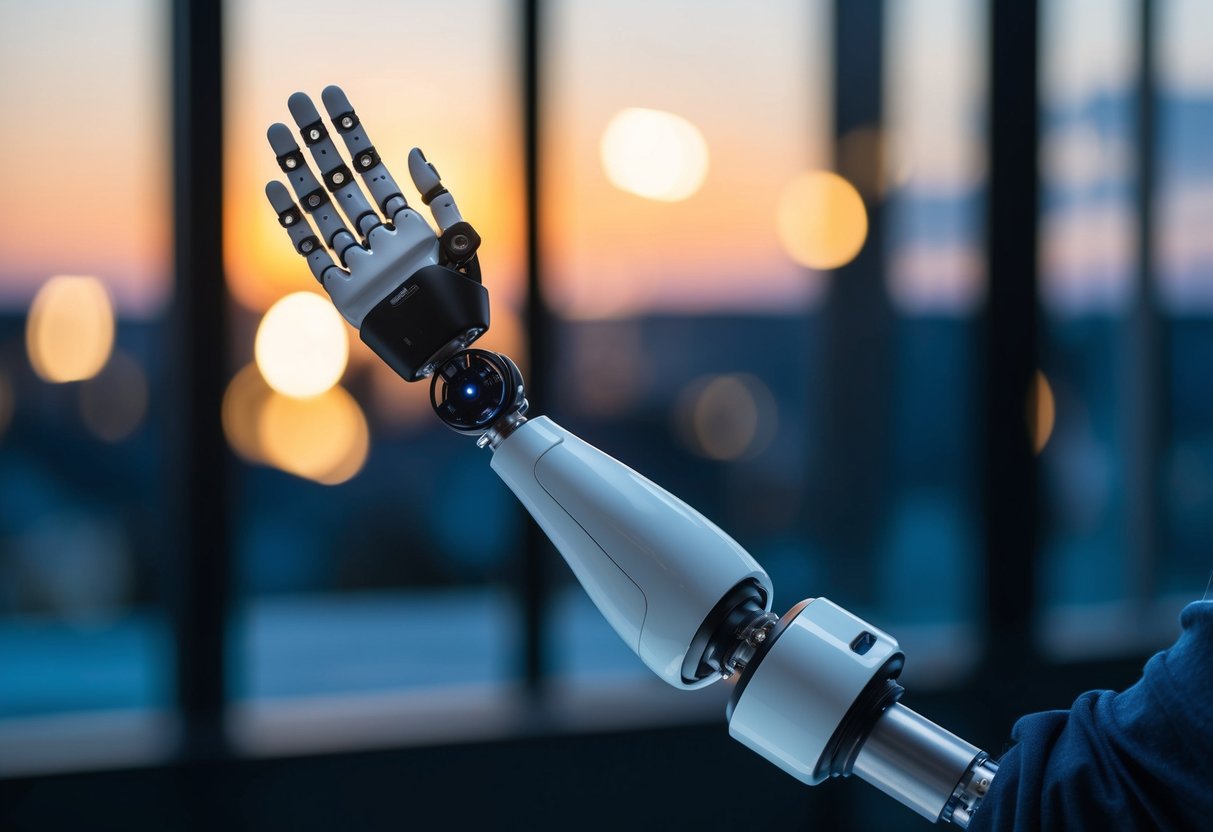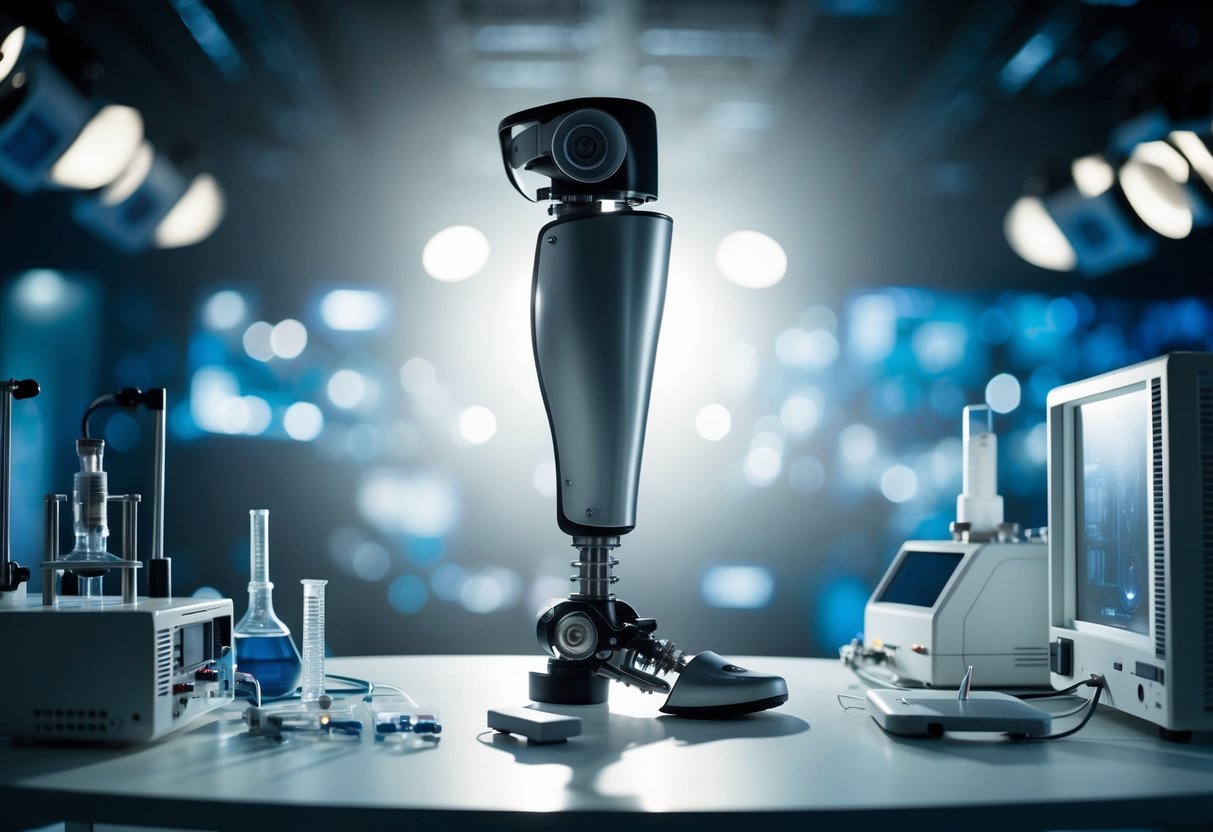
Integration of Sensory Feedback in Prosthetics

Breakthroughs in AI-enhanced prosthetics are revolutionizing mobility restoration by incorporating sensory feedback. By enabling bidirectional communication, these technologies allow users to control prosthetic devices with greater precision, while also regaining a sense of touch and spatial awareness.
Bidirectional Communication
Bidirectional communication in prosthetics involves a seamless flow of information between the user and the device. By implementing neurally controlled interfaces, users can send commands from their brain directly to the prosthetic, while the device sends sensory data back to the brain. This connectivity enables more natural movements and improves the control of robotic limbs.
One prominent example of this is the neurally controlled robotic arm, which translates neural signals into precise movements. As technology advances, integrating complex algorithms into these systems can enhance the response time and accuracy, significantly benefiting users. This development marks a significant step toward making prosthetic devices feel like an extension of the body, rather than a separate tool.
Tactile and Proprioceptive Feedback
Tactile and proprioceptive feedback play crucial roles in creating a realistic sensory experience in prosthetic limbs. Tactile feedback allows users to feel textures and pressure, enhancing their ability to interact with different objects. Proprioceptive feedback, on the other hand, provides a sense of limb position, which is crucial for maintaining balance and coordination.
Research has shown that by replicating these sensory signals, users can experience improved functionality and psychological comfort. Advanced sensors and algorithms are being developed to mimic these sensations accurately. By focusing on sensory accuracy, developers aim to create a seamless experience that closely mimics natural limb function, aiding in tasks that require precision and sensitivity. This integration is transforming users’ interactions with their environment.
Improving Mobility with AI-Prosthetics

AI-enhanced prosthetics are revolutionizing how individuals regain their mobility and autonomy. By integrating advanced technologies, these devices offer more natural and adaptive movement, mimicking the nuances of human motion.
Enhancing Natural Movement
AI-driven prosthetics aim to replicate fluidity in human movement. Sophisticated sensors detect the user’s intent and translate these signals into precise motions. This design mimics natural limb function, allowing wearers to walk, run, or perform daily tasks with increased ease.
These prosthetics analyze patterns and adjust accordingly, yielding more seamless motion. Whether ascending stairs or navigating uneven terrain, users experience reduced fatigue and improved balance. AI algorithms continually learn from the user’s movements, promoting a personalized fit and feel over time.
Adaptive Movement Patterns
Adaptive movement patterns in prosthetics involve real-time adjustments to the user’s movements and their environment. AI systems process data from embedded sensors to accommodate various terrains, responding instantaneously to changes.
This adaptability ensures users maintain stability and prevent falls, especially on challenging surfaces. Through continuous learning, the prosthetics refine their responsiveness and effectiveness, promoting confidence and mobility in diverse settings. The result is an intuitive experience, enabling users to move with grace and reliability across multiple environments.
User Experience and Prosthetic Control
Modern AI-enhanced prosthetics offer remarkable advancements in restoring mobility through improved user interfaces and adaptive control mechanisms. Key considerations include addressing usability challenges and enhancing customization and adaptability for individual needs.
Usability Challenges
AI-enhanced prosthetics aim to improve the daily lives of users, yet usability remains a significant concern. Users often face issues related to the intuitiveness of the control systems integrated into the prosthetics. The complexity of understanding and operating these devices can create barriers, especially for new users adapting to sophisticated technology.
Learning curves associated with prosthetic control interfaces can be steep. Users need accessible training and support to navigate challenges, ensuring effective utilization of advanced functionalities. Moreover, consistent feedback from users is essential to refine usability, minimize confusion, and enhance device efficiency and comfort.